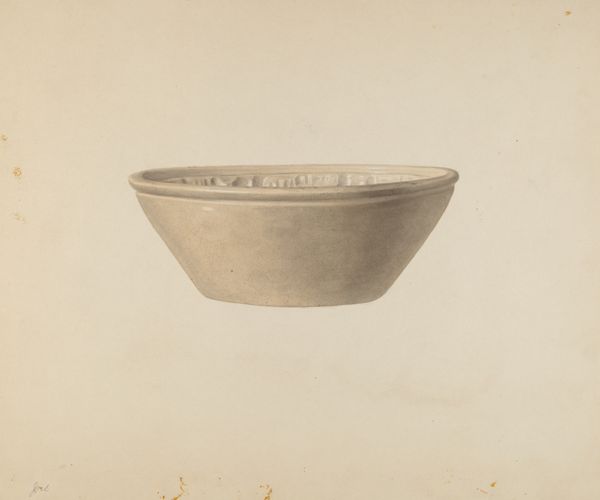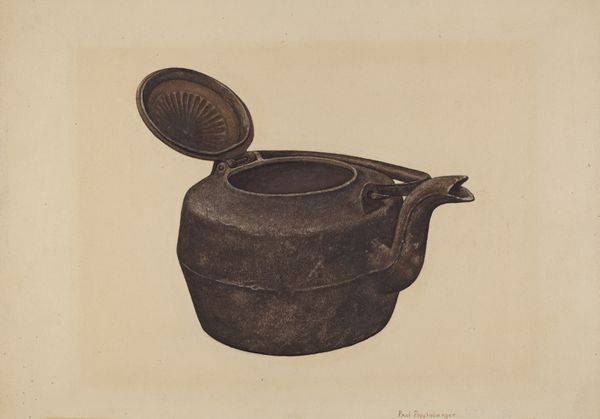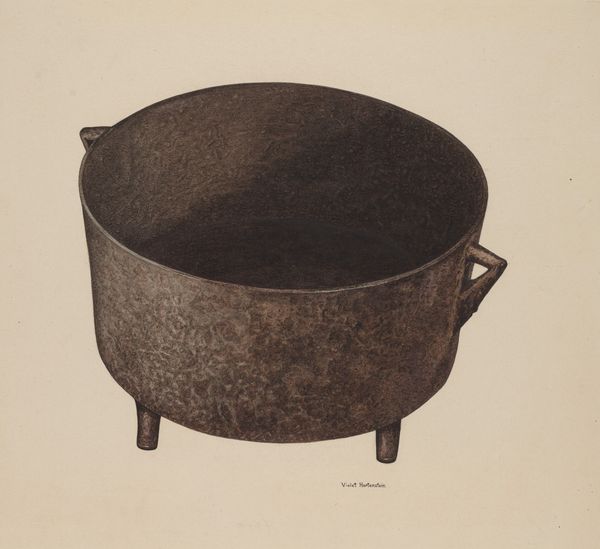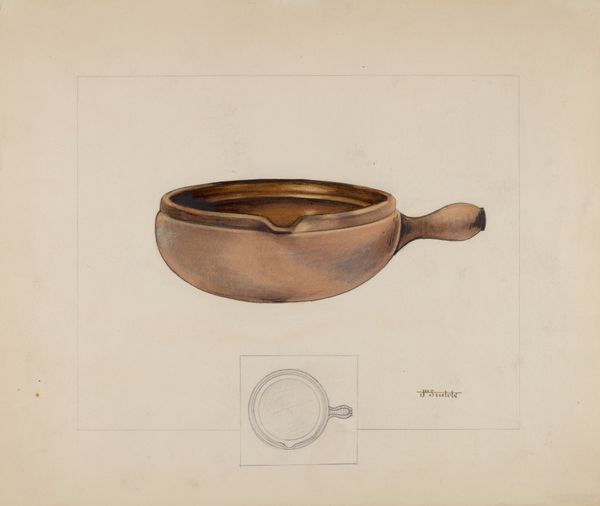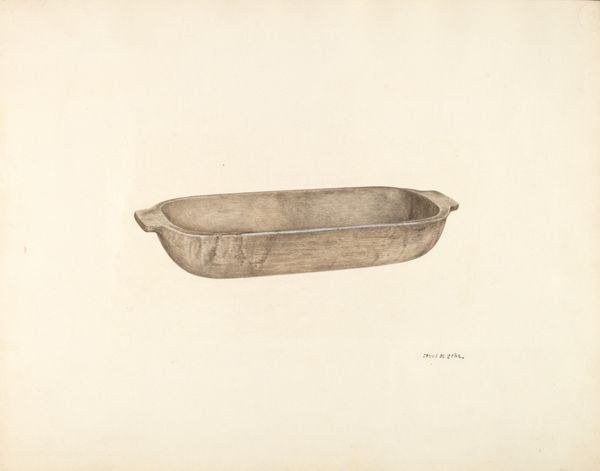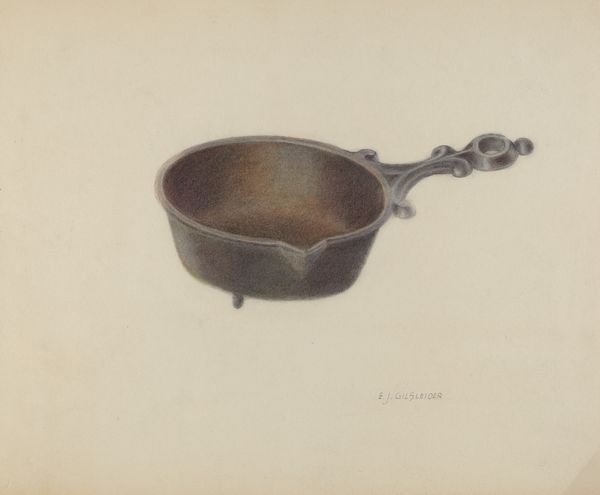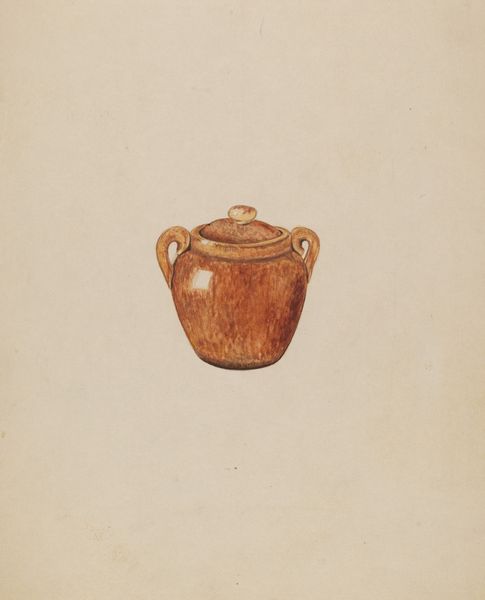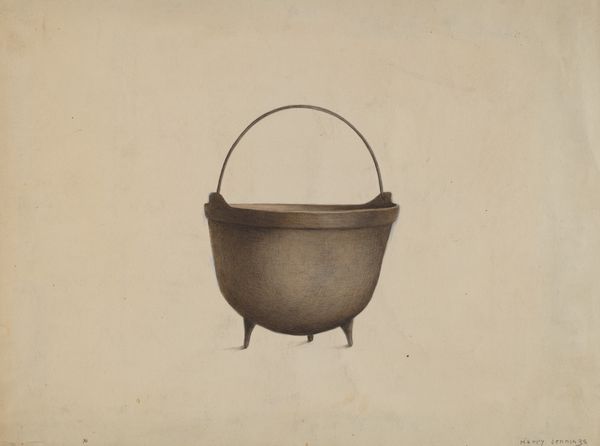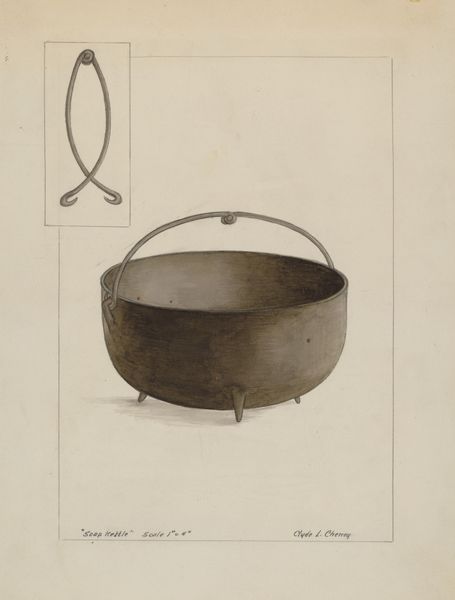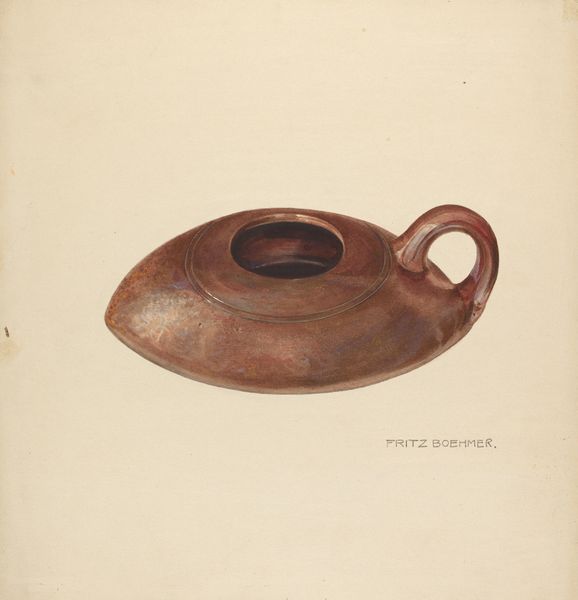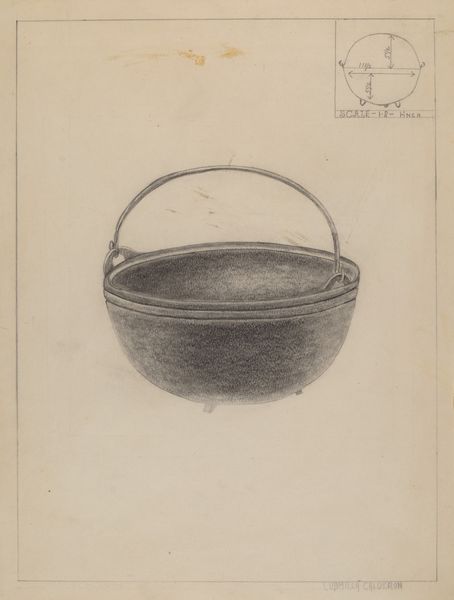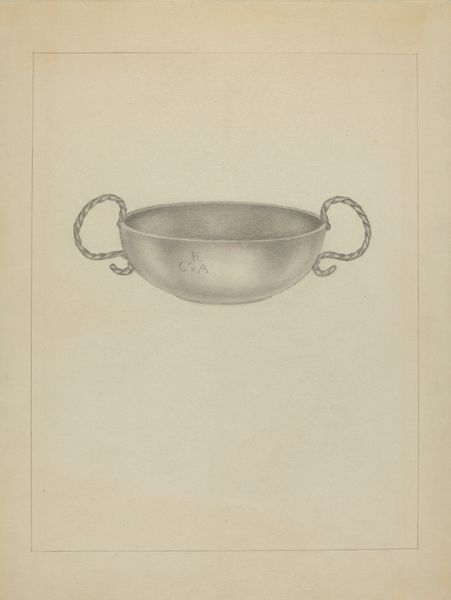
drawing
#
pencil drawn
#
drawing
#
toned paper
#
light pencil work
#
pencil sketch
#
pencil drawing
#
ink colored
#
watercolour illustration
#
tonal art
#
shading experimentation
#
watercolor
Dimensions: overall: 22.9 x 27.9 cm (9 x 11 in.)
Copyright: National Gallery of Art: CC0 1.0
Curator: Editor: So, this is Paul Poffinbarger's "Drinking Cup," made around 1940. It seems to be a watercolor and pencil drawing. It feels very straightforward, almost industrial, I guess? What do you make of it? Curator: Well, given the date, I immediately think about what cup production might have been like in 1940. Were these cups mass produced? Hand made? The material itself seems like a rough metal... How does the drawing style relate to these material realities? Editor: I see what you mean. The shading, the way he shows the cup's texture... It’s like he’s emphasizing the labor and process that went into making a simple drinking cup, especially in the midst of a war period and high manufacture times. Almost as if the artist wants us to appreciate it's creation more? Curator: Exactly! It isn’t just about aesthetic beauty. Look at how the "drawing" aspect itself becomes almost secondary. Think about what art supplies were easily accessible? What impact did it have on daily object design at that time? Editor: That makes me reconsider it completely. The choice of materials like pencil and watercolour, coupled with a seemingly mass-produced cup, puts the focus on consumption, class, labor conditions. I hadn't considered that before. Curator: Yes, consider the paper itself. It looks almost like brown paper which often served purposes in shipping, packaging. I wonder if the materials he used were commentaries on his means, what he had access to, the common material during a period of industrial turmoil? Editor: This really makes me think about everyday objects and their relationship to society and class more carefully. It definitely broadened my perception of what “art” can be. Curator: Indeed! Looking beyond the surface is key. Art exists in a complex web of materials, labor, and consumption, as you noted, a socio-economic history that informs it, makes it, breaks it.
Comments
No comments
Be the first to comment and join the conversation on the ultimate creative platform.

